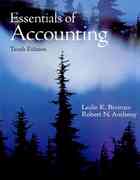Question
An economy consists of three workers: Felix, Larry, and Raphael. Each works 10 hours a day and can produce two services: mowing lawns and washing
An economy consists of three workers: Felix, Larry, and Raphael. Each works 10 hours a day and can produce two services: mowing lawns and washing cars. In an hour, Felix can either mow 1 lawn or wash 1 car; Larry can either mow 1 lawn or wash 2 cars; and Raphael can either mow 2 lawns or wash 1 car.
For each of the scenarios listed in the following table, determine how many lawns will be mowed and how many cars will be washed per day and enter these values into the corresponding row.
ScenarioLawns MowedCars WashedAll three spend all their time mowing lawns. (A)All three spend all their time washing cars. (B)All three spend half their time on each activity. (C)Felix spends half his time on each activity, while Larry only washes cars and Raphael only mows lawns. (D)
In the following table, identify the opportunity cost of washing cars for each worker.
WorkerOpportunity Cost of Washing CarsFelix Larry Raphael
Assume that the resources best suited to producing a particular service are preferentially used in the production of that service and that as the economy moves down along the production possibilities frontier, one worker at a time is transferred from mowing lawns to washing cars. Using the blue points (circle symbol), graph the production possibilities frontier (PPF) for this economy on the following graph. Then use the black point (plus symbol) to identify point A, the green point (triangle symbol) to identify point B, the orange point (square symbol) to identify point C, and the purple point (diamond symbol) to identify point D on the graph.
PPF
A
B
C
D
Graph
Quantity of Lawns Mowed
Quantity of Cars Washed
True or False: The production possibilities frontier consists of straight-line segments, rather than being smoothly bowed outward throughout, because each worker faces a constant trade-off between mowing lawns and washing cars.
True
False
Indicate whether each of the following allocations is efficient or inefficient.
Allocation
Efficient
Inefficient
A E or I
B E or I
C E or I
D E or I
Step by Step Solution
There are 3 Steps involved in it
Step: 1

Get Instant Access to Expert-Tailored Solutions
See step-by-step solutions with expert insights and AI powered tools for academic success
Step: 2

Step: 3

Ace Your Homework with AI
Get the answers you need in no time with our AI-driven, step-by-step assistance
Get Started


